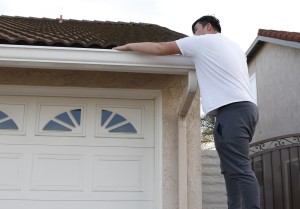
by Celine Hoang, Staff Writer
This winter, Southern California has experienced warmer waters, more rainfall, and unpredictable weather changes due to a phenomenon called El Niño.
While many believe that El Niño is a single storm, it is actually the warm, multi-storm part of a cycle called the El Niño Southern Oscillation (ENSO). ENSO also consists of El Niño’s sister cycle, La Niña, the cooling cycle.
For many students, the details surrounding El Niño are obscure.
“[El Niño is] a huge storm caused by a bunch of climate changes. I think it originated somewhere in Southern America and now it’s making its way toward Northern America,” Dominic Cao (‘16) said.
El Niño begins when the water near the equator in the Pacific Ocean becomes warmer than usual by one to three degrees Fahrenheit. The warmer water begins to vaporize and eventually results in more rainfall, especially in areas like Southern California.
El Niño, meaning the child of Christ, gets its name from the time it usually begins: Christmas time. El Niño occurs every 2-7 years and lasts for around 9-12 months.
Unfortunately, despite the immense increase in rainfall, El Niño won’t be able to quench California’s drought. El Niño cannot have much of an impact on the water supply because the rain is focused in Southern California while the state’s biggest water reservoirs are located in Northern California. Typically Northern California doesn’t see increased rainfall from El Niño because the area is too far from the equator to receive its benefits.
“What I know about El Niño is that it’s basically a huge rain storm that will be giving a lot of rain to Southern California and other areas south of the US and in Mexico. I do believe that it was caused by how warm our waters have become recently and that many other similar storms have developed due to other areas of the ocean warming up,” Yasir Habeeb (‘16) said.
Many experts believe that this year’s cycle could be the strongest El Niño to date. This could bring weather-related damage including damage caused by flooding or mudslides. To prevent major damage caused by increased rainfall, Californians can clean gutters and downspouts, fix any leaks in homes, invest in a generator, and have sandbags at the ready.





